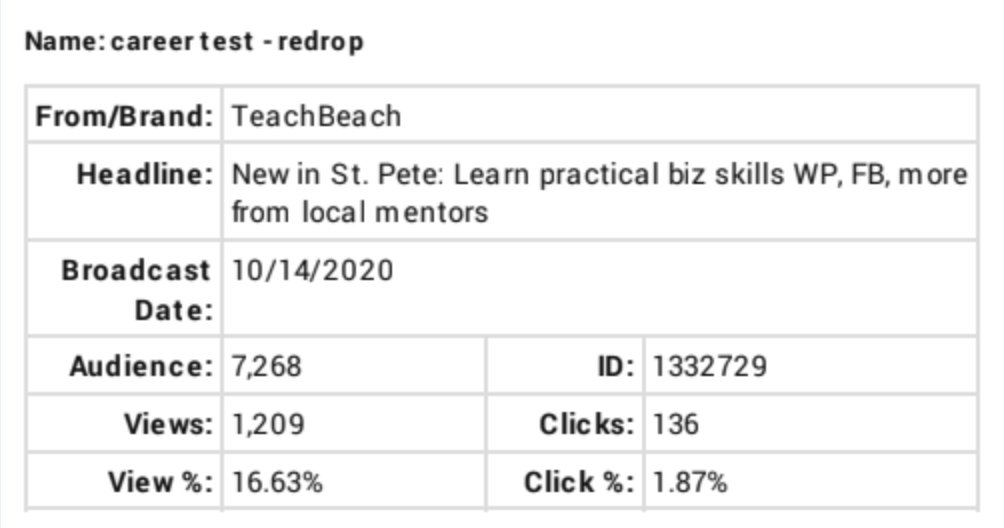Three compelling re-drop strategies for email marketing
See how each of these re-drop strategies meets a campaign objective
Simply put, a re-drop means sending a second email and/or offer to a segment of the original list: Openers, unopeners or clickers.
Site Impact, the leading provider of targeted email marketing, makes the case for adding re-drops before emailing to a new audience for several reasons.
However, the right re-drop strategy depends on the objectives of the campaign.
Let’s see how each of these re-drop strategies meets a campaign objective, starting with a case study on Teachbeach.com.
1. Re-drop to the openers
Re-dropping to openers is a standard approach since people who opened the email have demonstrated interest in the subject and have at least one exposure to the brand.
Sending a second offer or email to the openers points to a small investment - typically about 15% to 20% based on the open rate of the original email - to the most interested segment.
We used this strategy for Teachbeach.com, targeting people interested in career lessons, the original e-blast targeted 40,000 selected for age, income and interest in the St. Petersburg, FL areas, had 17% open rate, an audience of 7,268 openers.
The results from the re-drops are below:

Looking at the metrics, we estimated the cost per click at about $.53 per click, increasing brand engagement from the most interested audience at an affordable rate.
In the case of TeachBeach, we did not alter the creative very much, just add a few new classes. However, a more aggressive strategy could have been to invite the prospect to a free day of virtual lessons, or to highlight $1 trial offers available on the site.
2. Re-dropping to the "Clickers"
People who not only opened but also clicked on a link are the most interested of the openers, and potentially the most “bang for the buck”. This is especially important if the goal is conversions.
However, the audience needs to be large enough to generate a valid number of clickers for a workable re-drop.
The campaigns we’ve run on Site Impact have generated at least 1% CTR - in the case of Teachbeach the campaigns are above 1.5% CTR - it’s probably wise to save this strategy for campaigns that started at an audience target of 100,000 or more.
Re-dropping to clickers works a little like retargeting ads: There is a battle for attention and the more times you can reach the most likely to buy, the more conversions will occur.
3. Re-dropping to the unopened list
Although at first it seems counter-intuitive, there are a couple of reasons to re-drop to the unopened list: First, if the number of conversions is high and metric consistent, the campaigns may actually achieve more conversions, than if remarketing to the openers.
Second, if spreading an important message more widely is the primary goal, the unopened list also provides a compelling target.
In both of those cases, re-dropping to the original group of openers would be “preaching to the choir” - that is, the already sold, or the already informed.
Case in point: LocalMediaInsider’s subscription drive was often re-dropped to the unopened list with a different subject line. This converted a substantial number of additional subscribers each time. That is because the conversion rate was a consistent 1% of new openers, while those who had already opened had demonstrated their unwillingness to engage the paywall for that particular piece of content. A different subject line highlighted a different piece of content in the newsletter, resent to the non-openers generated the most new conversions.
A caveat here, this strategy was made possible in part because each email had several different pieces of content, too many for one subject line. Eventually, the list as a whole was culled to only the audience that had opened in the past six months.
Similarly, if extending an important message broadly is the most important objective - say for a political campaign, a health announcement, or Covid-related business information -- a re-drop to the non-openers can accomplish that goal.
So those are three strategies to consider to amplify targeted email campaigns. Keep in mind that the most expensive part of the email is often time spent to come up with the campaign message and creative, so a re-drop is a way of leveraging that investment.






